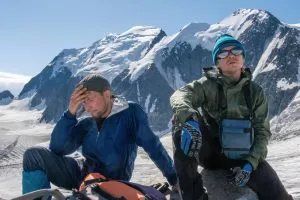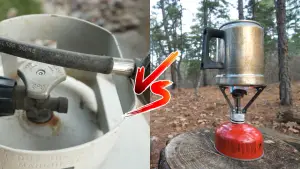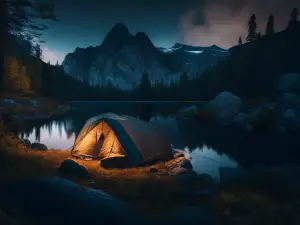Is Big Bend National Park Safe? (2023)
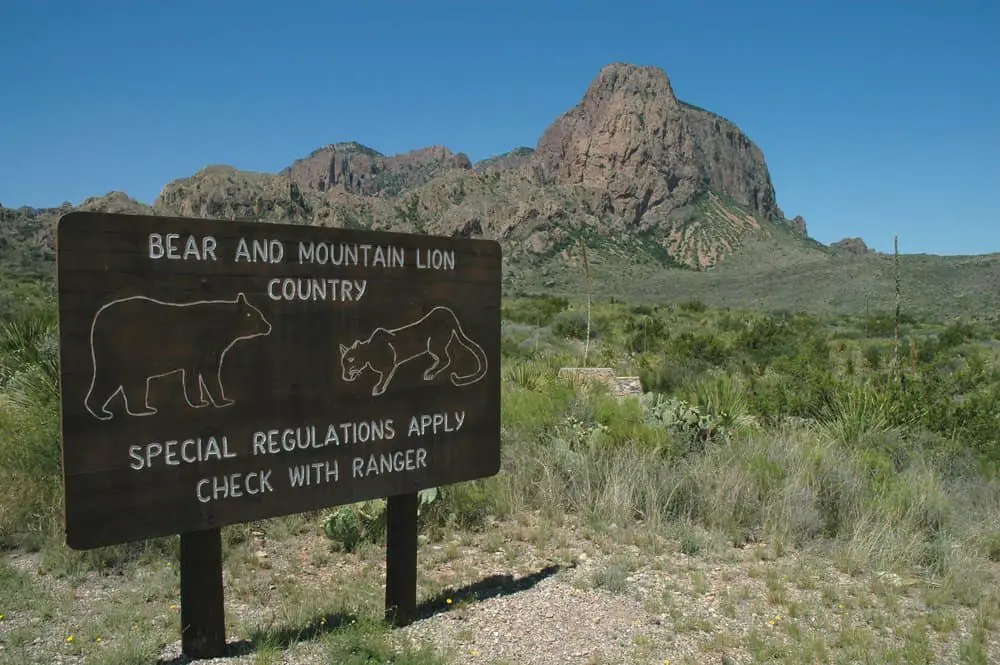
The Big Bend region of South Texas is a popular tourist destination boasting many activities and sights. Known for its mountainous terrain, Big Bend National Park draws in riders, hikers, campers, and nature lovers from all across the United States.
However, if you’ve been planning a visit to Big Bend, I’m sure you’ve been wondering – is Big Bend National Park safe?
The answer is a resounding yes! While the park does have its fair share of dangers and crime, it is no more dangerous than any other national park in the country.
Quick Links
What Are the Biggest Dangers at Big Bend National Park?
The most common dangers in Big Bend National Park are the same dangers that exist in any remote, mountainous area – dehydration, heat exhaustion, hypothermia, and getting lost.
Additionally, some animals in the park could pose a threat to humans, such as mountain lions, bears, bobcats, and rattlesnakes.
Lastly, as with any major tourist attraction, the most common crimes in Big Bend National Park are thefts from vehicles and campsites and burglaries from lodging facilities.
We’ll cover each part in more detail below.
How Do You Stay Safe in Big Bend National Park?
Big Bend National Park is a very remote place. There are no hospitals, no police stations, and no medical facilities once you get deep into the backwoods. If you get hurt or sick, you will have to deal with it yourself until help arrives. To stay safe in this environment, follow these tips:
Stay on designated trails. Trails are marked with signs that show the length and trail rules. Here’s what to look out for:
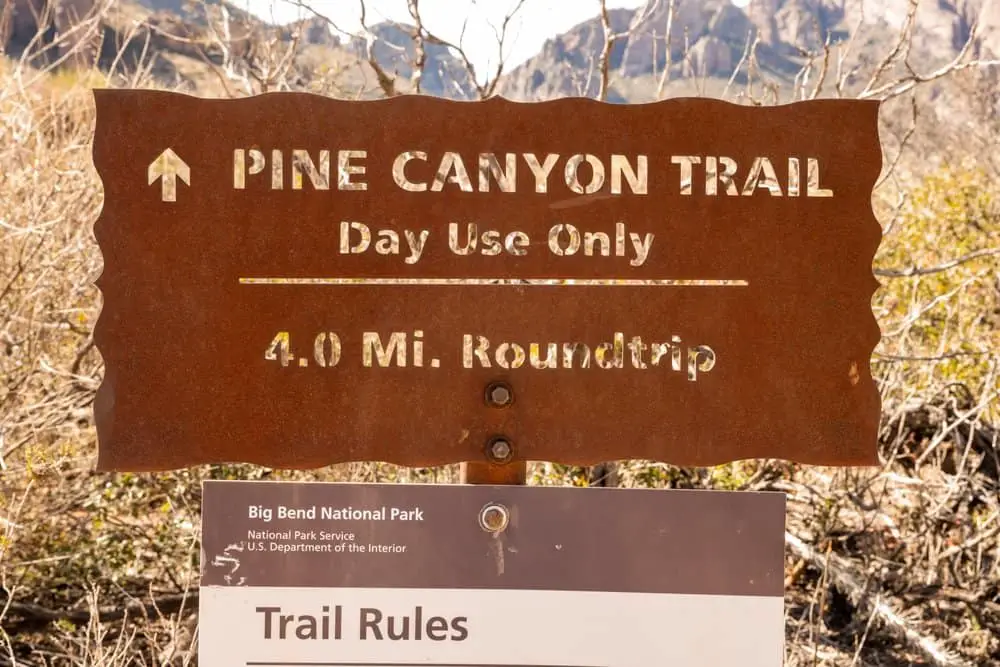
Make sure to stay hydrated. The desert heat will have you sweating buckets, and it’s easy to become dehydrated.
If you’re hiking, bring plenty of water. If you’re going on a longer trail, you may want to consider bringing a water purifier so that you can refill your bottle with water from the springs along the way.
Wear sunscreen and a hat. The park can be very hot during the summer months (May through September), with temperatures reaching over 100 degrees Fahrenheit each day. This high temperature can cause dehydration, heat exhaustion, and heat stroke in those who are not accustomed to the climate. Even on cloudy days, the desert sun can be brutal.
My personal recommendation is to visit Big Bend National Park during cooler months when temperatures are more comfortable. Wear a wide-brimmed hat and sunscreen with at least SPF 30.
Wear proper clothing: Hiking boots or shoes are recommended over sneakers because they provide better traction on rocks, which is what hikers will encounter most often in this national park. You also want to make sure that you’re wearing long pants so that no parts of your body are exposed when walking through tall grasses or bushes. As far as material, I would recommend something lightweight and breathable. I typically go with polyester over cotton in most cases.
Stay out of closed areas. These may be marked by yellow tape or red flags along the trail and on campgrounds. Closed areas include caves and mines, private property, endangered species habitats, and wildfire burn areas that need time to recover before humans can safely visit them. In these areas, it’s always best to play it safe by staying out altogether. You can check out the park’s website for more information on what’s closed at any given time during your trip to Big Bend National Park.
Don’t feed wildlife! It’s illegal to feed animals like deer, wild pigs, javelinas, skunks, raccoons, and bears. When animals become used to being fed by humans, they lose their natural fear of us. They may start begging for food or becoming aggressive when they don’t get what they want. Plus, some human foods can be dangerous for animals. So please, don’t feed the wildlife!
Be prepared for emergencies. Bring a first-aid kit, plenty of water, and food on all hikes. It’s also a good idea to carry a flashlight, whistle, and map with you. Let someone know where you’re going before you set out, and check-in with them when you return.
Don’t travel alone if you don’t have to. It can take hours to hike even a short distance in Big Bend; if you become lost or injured while hiking alone, it could take days before anyone finds you and helps you out of trouble. Besides, Big Bend has some of the best hiking trails in Texas, why not share it with a friend, or two?
Don’t go into caves or mines without an experienced guide or tour group leader. Many caves are unmapped and not well-explored; staying out of them will help ensure your safety (and prevent damage to these fragile areas).
The Wildlife of Big Bend National Park
There are over 75 species of mammals, 450 species of birds, 56 species of reptiles, and 11 species of amphibians that live in Big Bend National Park.
The most common animals you’ll see in the park are deer, javelinas, coyotes, and raccoons. You might also see some more unique animals like desert bighorn sheep, pronghorn, and black bears.
While most of the animals in the park are harmless, there are a few that could pose a threat to humans. These include black bears, mountain lions, bobcats, coyotes, javelinas, and rattlesnakes.
If you do encounter an animal while in the park, it’s important to stay calm and not make any sudden movements. Also, make sure to clean up after yourself so that you don’t attract wildlife to your campsite.
Are there bears in Big Bend National Park?
Yes, but they’re not common. It’s possible to see a bear or two during your visit to the park, but it’s unlikely. Most visitors don’t see any. According to the National Park Service, there are between 30-40 black bears living in Big Bend as of 2020.
Black bears were once common in this area, but development and hunting pressure have reduced their numbers significantly. Today, black bears are seldom seen outside of remote areas. However, they can still be found in the Chisos Mountains and along some of the river corridors.
Black bears are omnivorous and will eat almost anything they find. Their diet includes acorns and other nuts, insects, small animals (such as squirrels), fruit such as prickly pear cactus or desert palm berries, and sometimes even carrion (dead animals). The exception to this diet is during spring when black bears dig for roots or bulbs underground because they are hungry enough to risk being caught by an angry prairie rattlesnake or copperhead snake!
In springtime, when food is plentiful, black bears may become more aggressive than usual because they’re protecting their food supply from other animals – including humans!
Typically, Black bears aren’t aggressive toward humans unless they feel threatened by them or their cubs are nearby. Don’t run away if you see a bear while hiking on a trail, as this could trigger an attack. Instead, stand still until the bear gets out of sight; then back away slowly without turning your back or showing fear.
Does Big Bend National Park have scorpions?
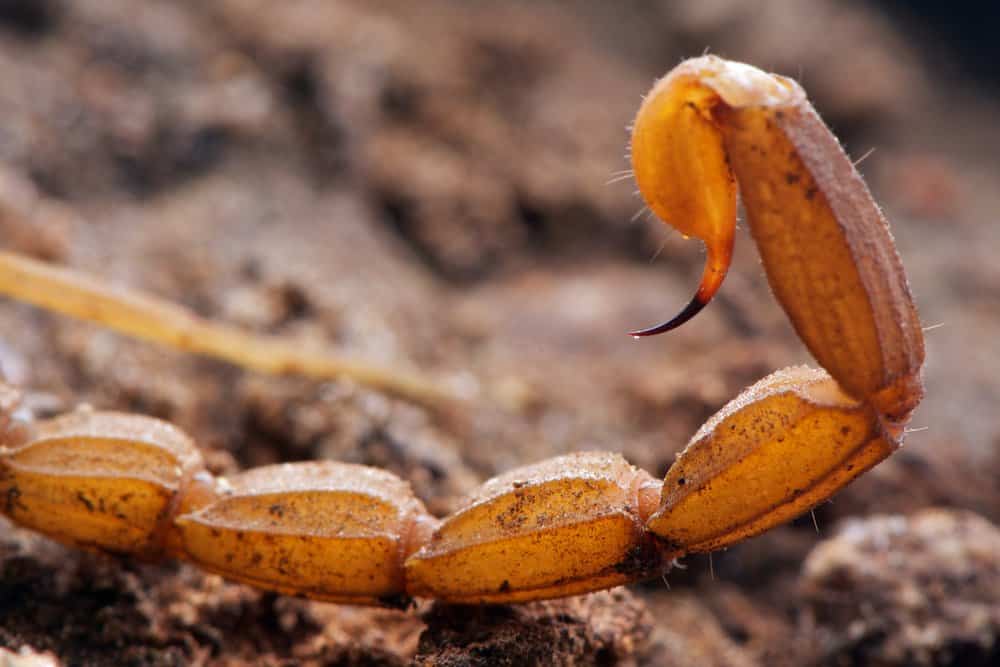
There are many different species of scorpions in Big Bend National Park. The most common one is the bark scorpion, which has a dark brown body with a wide tail and a narrow stinger.
These scorpions are large enough to cause quite a bit of damage to humans if they sting them, but they are not considered deadly. Although deadly to insects, to humans, the most common complaint of a scorpion sting is usually just a bit of discomfort.
As of 2021, a type of scorpion called the vinegaroon has made its way into the park. Dubbed the “acid-shooting land lobsters,” these scorpions are around three inches long and have long whip-like tails that shoot a spray of 85% acetic acid, which is the central part of vinegar. Hence, the name vinegaroon. And although they may seem a bit unsightly, they are considered harmless.
Are there rattlesnakes in Big Bend National Park?
Yes, there are rattlesnakes in Big Bend National Park. The park is home to four species of rattlesnakes: the Western Diamondback, the Black-tailed Rattlesnake, the Mojave Rattlesnake, and the Massasauga Rattlesnake. All four are venomous and can be dangerous if you come into contact with one.
Besides rattlesnakes, there are over 30 species of snakes found in Big Bend National Park.
The best way to avoid a snakebite is to stay on well-used trails, don’t hike alone, investigate your surroundings with a stick before sitting or leaning against something, and always keep an eye out for snakes when climbing over rocks or logs.
Rattlesnakes prefer dry, rocky areas and spend a lot of time hiding under rocks or logs. You should always wear hiking boots when exploring Big Bend’s backcountry for extra protection.
Crime Rate of Big Bend National Park
The people in Big Bend National Park are amiable and helpful. The rangers are knowledgeable, the camp hosts are friendly, and the other visitors are always willing to share their park knowledge with you.
However, in the last few years, Big Bend (along with many other parks) has seen an influx of visitors. According to a recent census, it has become the most visited national park in Texas. With its increased popularity comes increased safety concerns. Some people worry that a rising number of tourists will mean an increase in crime and other dangers.
The good news is that the crime rate in Big Bend National Park is lower compared to other parks around the country. While there are occasional reports of thefts from vehicles, violent crimes are rare.
The park rangers can’t prevent all crime in Big Bend National Park, but they do work hard to prevent significant incidents by using patrols and other techniques to deter criminals and catch them if they do commit a crime.
Conclusion
The most important thing you can do to stay safe in Big Bend National Park is to plan ahead. Ensure you know what areas are open to visitors, when they’re open, and how much water you’ll need to bring. If possible, let someone know where you’re going and when you expect to return.
If you’re new to backpacking or camping in general, start small by using the campgrounds at Chisos Basin or Rio Grande Village as a basecamp for exploring the rest of the park. You’ll have access to water, bathrooms, and other amenities while still being able to enjoy parts of the park without having to carry heavy packs on long hikes down isolated trails or roads.
Big Bend National Park is a beautiful and remote place. By following these safety tips, you can help ensure that your visit is enjoyable and safe for everyone involved.


